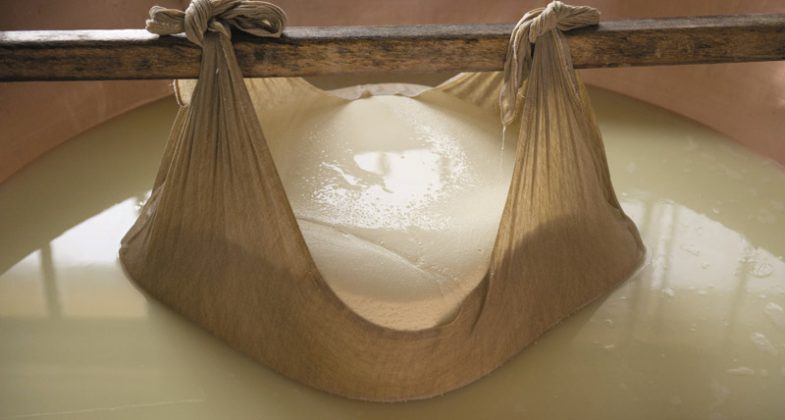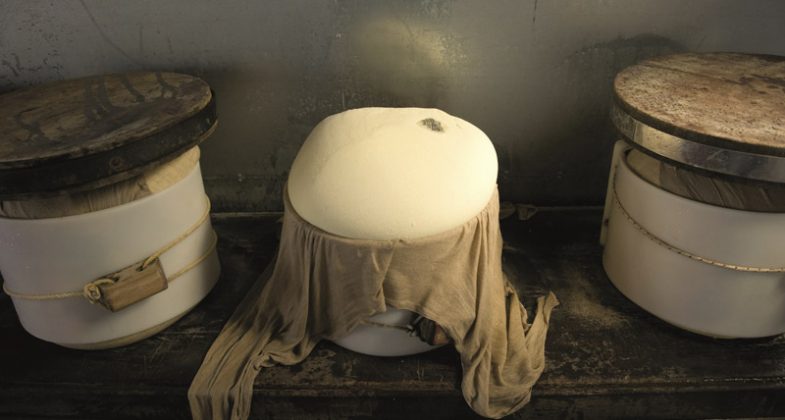A long tradition of production as well as links with the region from which this cheese originates have given it a well-known “Made in Italy” label. What’s more, this cheese is not only tasty but healthy and nutritious too!
How is a masterpiece created? According to celebrated composer Ennio Morricone, it’s 1% inspiration and 99% perspiration. So it comes from “working up a sweat”. And what goes for a work founded purely on human talent is even more true when it comes to selecting raw materials and producing a food product; is takes hard work and organisation.
How is a food delicacy created? Through hard work and through the skill of knowing how to combine the best elements with the most effective way of working. Creating a delicacy requires the foresight to know how and what new things to try and, above all, what to keep the same.This is the only way that a food product can become a masterpiece: when the work of generations of growers, producers and distributors find the right path to honing and preserving the raw materials of a particular region in the best way all through the years.Let us briefly summarise the where and how (and the P.O.D; Protected Designation of Origin) of the masterpiece known as Parmigiano Reggiano cheese. This is one of the oldest cheeses that exists in Italy, created and developed in the valleys between the Po and the Rhine – a true delicacy and an example of Italian genius.
Where
The area is therefore essential as, although it’s true that you can do (almost) anything anywhere, it is also true that delicacies can be found only where certain natural factors are at play. What is excellent in one place will only ever be good elsewhere.The capitals of Parmigiano Reggiano cheese production are Reggio Emilia, Parma and Modena but it is also produced in other neighbouring areas, specifically Bologna (to the left of the Rhine) and Mantua (to the right of the Po). The 4000 cattle farmers in this region feed their animals only animal feed produced on site (silage and fermented feed is not permitted). The cheese is made using traditional ingredients: milk, rennet and salt, which are processed and transformed into cheese in the same area in which they originated.There are, in fact, 400 dairies that mature and test wheel after wheel of cheese for a minimum of 12 months (and for up to more than three years).
How
Let us start with an impressive quantitative fact: to make a wheel of Parmigiano Reggiano cheese, weighing on average 38.5Kg, nearly 600 litres of milk are needed (550 litres; on average 16 litres per kilo of cheese). Milk from two milking sessions is used – one from the evening which has rested in special tanks and been partially skimmed, and one from the morning. These different milks are combined in a special copper cauldron shaped like an upturned bell. At this point, calf rennet and whey starter (a natural lactic flora culture) are added to raise the acidity level of the milk.The mixture curdles in ten minutes and then the cheese is broken down into granules (a process called “spinatura“).The cheese is cooked in a cauldron heated to 55 degrees for 50 minutes. The cooked mass is passed through a hemp cloth and then taken out, wrapped in a special cloth and placed in moulds called “fascere“. These fascere give the cheese wheels their characteristic shape.Identification data and information about the origin of the cheese wheel is then etched onto the side of the cheese. This includes a progressive identification number, the month and year of production, the serial number of the dairy and the famous “pin dot” writing which is applied to a plaque of casein on the surface of the cheese.The cheese wheel is then immersed in a solution of water saturated with table salt for around 20 days.The painstaking maturing process can now begin. The cheese is left to rest for months on wooden tables before the testing and marking process begins. Only those wheels that demonstrate all of the Protected Designation of Origin characteristics can be sold as Parmigiano Reggiano.
The P.O.D mark
What is the P.O.D mark? This mark allows consumers to differentiate high quality products from others. In fact, since 1996 all Parmigiano Reggiano production has been certified by the European Community using the P.O.D – Protected Designation of Origin – mark (European standard for regulation EEC 2081/92 and recognition of regulation (EC) No. 1107/96). This designation guarantees that only cheese produced in strict accordance with production guidelines can be sold as Parmigiano Reggiano.Since August 2012 (the date when EU regulation no. 794/2011 came into force), the guarantee also specifies the places in which the cheese may be produced. Parmigiano Reggiano cannot be produced outside of the production and processing areas mentioned previously: the Reggio Emilia, Parma and Modena provinces as well as some areas of Bologna and Mantua.The P.O.D mark is therefore a guarantee of quality relating to how and where the matured cheese has been produced. This cheese has an identity synonymous with the identity of Italy itself.Parmigiano Reggiano P.O.D: a guarantee of skill, of Italy and of the Italian way of doing things well. One of the most delicious delicacies that Italy has to offer.











No comments yet.